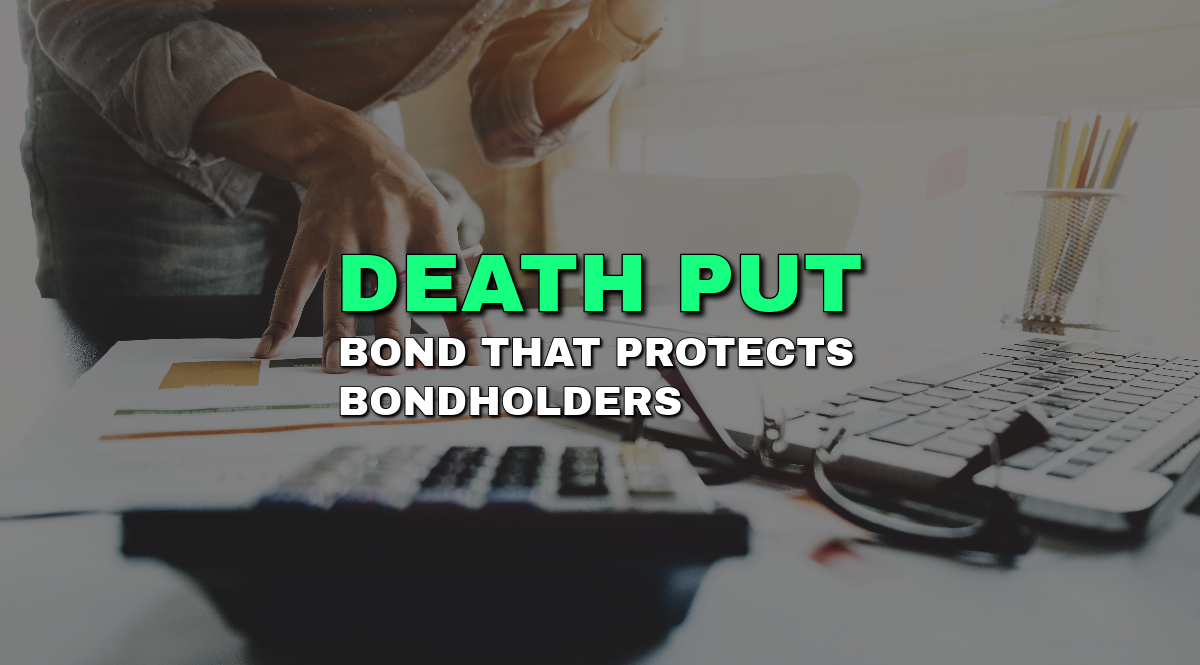Death Put: Definition and Real-world Examples Revealed
Key Takeaways
The Death Put is a bond feature that protects bondholders. It is a bond feature that provides protection for bondholders. This feature allows the heirs of bondholders to sell the bond back to the issuer in two situations.
The first situation is when the bondholder dies, and the second is when the bondholder becomes legally unable to make decisions. It ensures financial security for loved ones and is also known as a “survivor’s option.
Mitigating Interest Rate Risks: The death put is especially valuable when interest rates rise above the bond’s coupon rate. It functions as a safety net to protect bondholders from potential losses due to interest rate fluctuations.
The death put is beneficial for several reasons. Firstly, it protects against fluctuations in interest rates. Secondly, it offers the potential for increased financial gain if interest rates are low at the time of the bondholder’s death. Lastly, it ensures the safety of investments when interest rates exceed the bond’s rate.
Bondholders may struggle to sell bonds with a death put before their death. This is because there is a limited number of buyers in the secondary market. Some bonds with this feature may also be subject to early redemption, impacting bondholder rights and returns.
Let’s delve into the world of Death Puts, uncovering what they truly represent and how they impact bondholders. Come with us to learn more about this interesting financial feature and its impact on the bond market. Learn from an industry expert about its real-world uses and ponder its concept. If so, you’re in the right place.
What is a Death Put exactly?
A “death put” is a part of a bond that protects bondholders. It is a bond feature that safeguards bondholders. It permits the heirs of a bondholder to sell the bond back in the event of the bondholder’s death or incapacitation.
This option allows investors to sell the bond back to the issuer at its original value. It helps protect their investment and ensures financial security for their loved ones. Another term frequently used to describe a death put is a “survivor’s option.”
Understanding the Death Put
A death put is sometimes added to bonds to make them more appealing to long-term investors. However, bonds with a death put might offer lower returns because this option mainly benefits the bondholder.
A put is an option for bondholders. If the bondholder dies or cannot make decisions legally, they can sell the bond back to the issuer. The bond will be sold for its original value. However, it is not mandatory.
Think of a death put as a safety net, similar to insurance. If interest rates rise, the value of bonds in the open market tends to fall. The death put is especially valuable when interest rates are higher than when the bond was first purchased.
Mitigating Interest Rate Risks with the Death Put
This is because a bond’s interest rate is usually set based on prevailing rates, so changes in market rates can affect the bond’s value.
Bond issuers use the death put to make their bonds more attractive, even though the bondholder may receive a lower interest rate in exchange.
This feature protects bondholders from the risk of interest rate changes caused by their death or legal incompetence.
What are the Benefits and Considerations of the Death Put in Bonds?
Here are the benefits:
Interest Rate Protection: The death shields bondholders from interest rate changes when they pass away, safeguarding their rights.
If the bondholder dies when interest rates are lower than the bond’s coupon rate, the bond’s market value can be higher. As a result, the estate can sell it for more money in open market sales. This means that the estate can sell it for more money in open market sales.
The death put offers security when interest rates exceed the bond’s coupon rate. It allows the estate to sell the bond back to the issuer at its original value.
Considerations
It is hard to sell bonds with a death put before the bondholder’s death because of limited market liquidity. They are less commonly traded in secondary markets, affecting the ease of cash conversion.
Early Redemption Risk: Some bonds with a death put may allow the issuer to buy them back early through an early redemption feature. This feature could affect bondholder rights and returns. It typically occurs when falling interest rates make it favourable for the issuer to refinance the debt. If the issuer chooses to do so, bondholders may have to invest the money they receive at a lower interest rate.
Illustrating the Death Put with a Fixed-Income Investment Example
Let’s delve into a practical example of how a death put works with fixed-income investments. Imagine an investor chooses to have a death put on a $1,000 par value bond they acquire. This bond carries an annual coupon rate of 3%, and its maturity period spans 20 years.
Fast forward five years, and unfortunately, the bondholder passes away. At this juncture, interest rates for similar fixed-income investments have surged to 5%.
Consequently, the value of the purchased bond falls below its $1,000 par value. Why? Because investors are favoring bonds with higher coupon rates, such as the 5% ones, over the 3% coupon bond.
The price of the 3% coupon bond decreases until it matches the current 5% market rate. This includes the coupon payment and potential capital gain.
The Role of the Death Put in Mitigating Fixed-Income Investment Risks
This is precisely the scenario in which the death put proves beneficial for fixed-income investments. Although the bond’s market value is below $1,000, it can still be redeemed for its full face value of $1,000.
This is useful when there are restrictions in the secondary market. Selling the bond there might lead to a lower price than its value, impacting fixed-income investments.
Maximizing Fixed-Income Returns in Favorable Coupon Rates
Now, this is precisely the scenario where the death put proves beneficial for fixed-income investments. Even though the bond’s market value falls below $1,000, it can still be redeemed at its full face value of $1,000.
This benefit becomes especially evident when faced with secondary market limitations and potential legal incapacitation, where selling the bond in the secondary market might result in a price below its actual value, potentially impacting the overall value of fixed-income investments.
Bottom line
In conclusion, when making investment decisions, whether in the stock market or any other asset class, it’s crucial to rely on a combination of reputable sources.
This should include government data, white papers, and original reporting, as well as insights from interviews with industry experts. This multi-faceted approach helps ensure informed and well-rounded investment strategies in the complex world of finance.
The post Death Put: Definition and Real-world Examples Revealed appeared first on FinanceBrokerage.

































